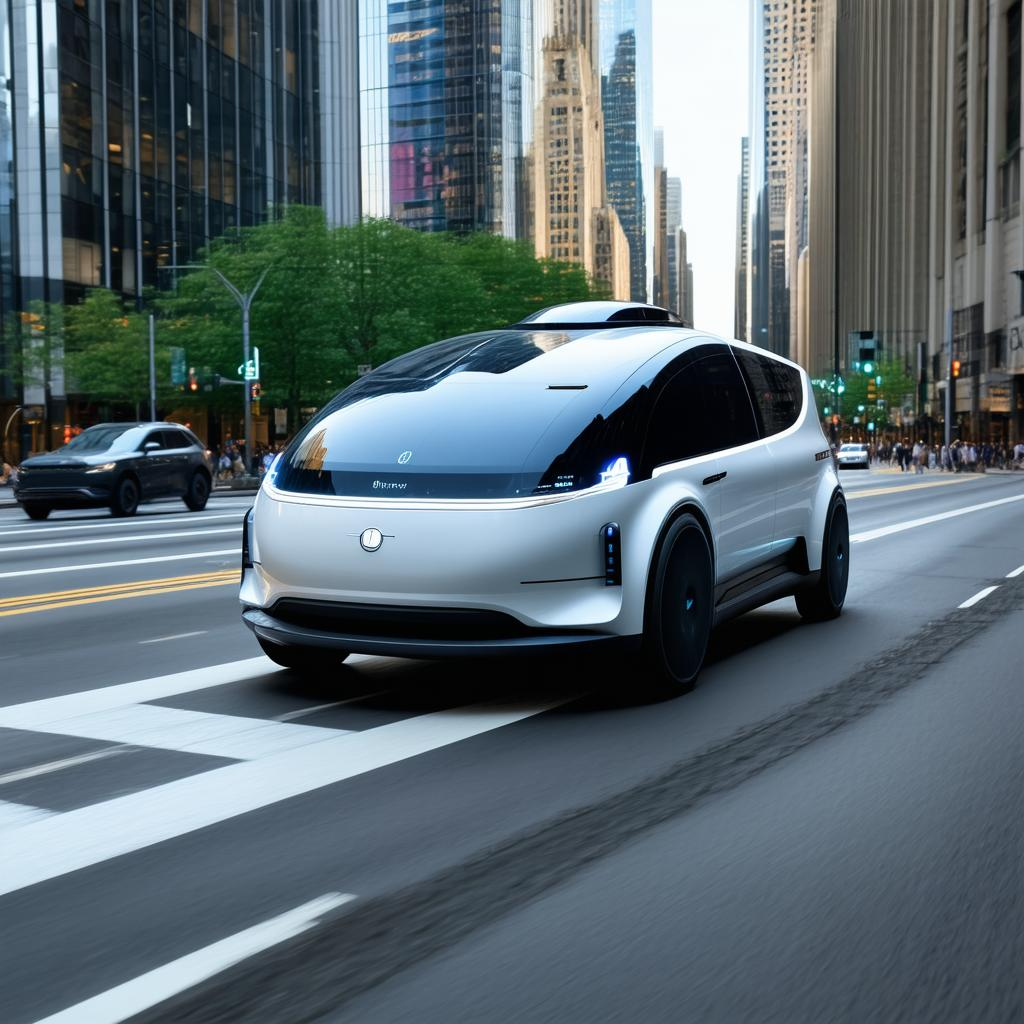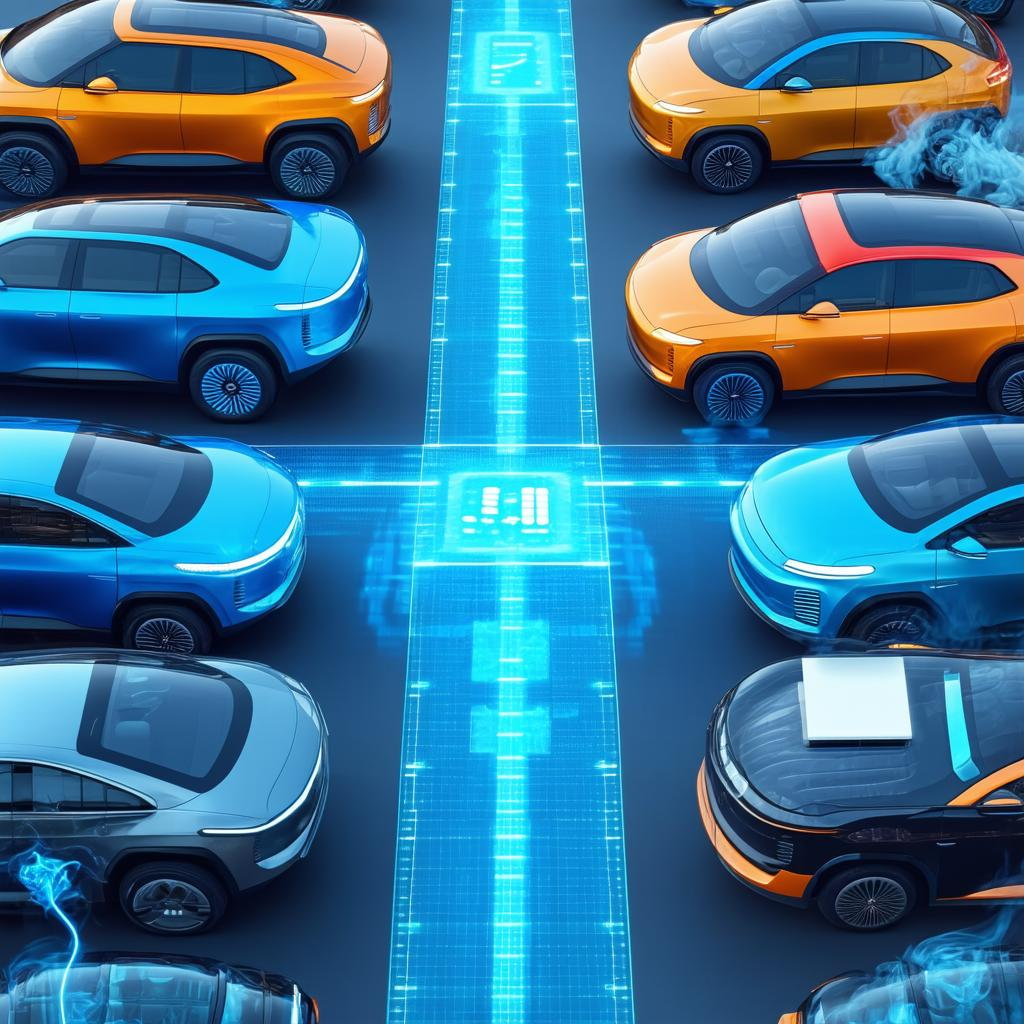Self-Flying Car Prototypes Hit the Market: Personal Air Travel Becomes Reality
Discover how self-flying car prototypes are transforming travel in 2025. From pilot-free technology to regulatory hurdles, find out how personal air travel is turning into a plausible reality.
Introduction: Up, Up, and Away
Back in the early 2020s, I distinctly remember rolling my eyes whenever somebody mentioned “flying cars.” The concept felt so Jetsons-like, so far-fetched—something our grandchildren might see, maybe. But here we are in 2025, and I’m trying to pinch myself because self-flying car prototypes have, quite literally, arrived on the market. Yes, real manufacturers are unveiling futuristic, fully autonomous aerial vehicles. It’s like we’re stepping into a sci-fi movie, minus the cheesy background music.
At first, I thought, Am I hallucinating? Are these prototypes just fancy drones with seats? But after digging into the nitty-gritty of personal air travel advances, I’ve realized it’s deeper than I ever imagined. We’re talking pilotless systems guided by AI, advanced collision-detection sensors, and vertical takeoff capabilities that may soon let you hop from suburb to city center in mere minutes. And it’s not just hype—there’s genuine momentum behind these innovations, from established aerospace giants to nimble startups hoping to corner the new skyway market.
The Tech Behind Self-Flying Cars
So, what on earth (or above it) powers these new-generation vehicles? In simplest terms: autonomous flight software plus robust hardware. Each self-flying car relies on an array of LiDAR systems, integrated cameras, GPS modules, and next-level artificial intelligence to map surroundings in real time. Unlike conventional airplanes, these personal aerial vehicles (PAVs) are designed to take off and land vertically, removing the need for giant runways.
- Vertical Takeoff & Landing (VTOL): Using multiple propellers or ducted fans, prototypes ascend straight up and transition into forward flight, akin to a large quadcopter but with a sleek cabin.
- AI-Powered Navigation: Real-time sensor data enables hazard detection—from stray birds to rooftops—to ensure safe, autonomous flight paths.
- Energy-Dense Batteries: Often leveraging high-capacity cells for propulsion, or in some models, hydrogen fuel cells. Eco-friendly power is a major focus.
Safety—Friend or Foe?
I’ll be honest: I’m both mesmerized and somewhat nervous about a swarm of flying vehicles overhead. Right now, one of the biggest questions is safety. These prototypes come equipped with multiple redundancy systems—backup motors, secondary flight controllers, even ballistic parachutes. Yet, some skeptics argue that placing so much trust in AI is risky. After all, a glitch in the matrix at a thousand feet above ground could be catastrophic.
Still, the safety conversation isn’t new. We had similar debates about self-driving cars back in the day. Over time, the tech improved, and regulatory bodies established strict testing protocols. For these self-flying vehicles, we’re seeing a similar process unfold. In some regions, aviation authorities demand rigorous flight hours in controlled airspace before any passenger rides are approved. The goal? Demonstrate reliability in varied weather conditions—rain, wind, snow. These prototypes have to handle them all.
Interestingly enough, I spoke to a friend who tested one of these prototypes in a training facility. He admitted feeling a mild sense of vertigo initially but quickly got comfortable once the onboard system’s gentle voice announced, “Takeoff in three… two… one…” He swears it felt as stable as any commercial flight. Hard to believe, but I guess we’ll need to experience it ourselves to be sure.
For further reading on how different regions are handling transportation revolutions, external authorities like the
Federal Aviation Administration (FAA) offer guidelines on emerging air mobility technologies.
Changing the Urban Skyline
Think you have problems finding parking in downtown areas now? Picture an aerial cityscape dotted with elevated landing pads—each the size of a small helipad—perched atop skyscrapers. Urban planners are buzzing with excitement (and a bit of dread) over the concept of “air lanes” where self-flying cars could operate. The notion is to ease ground congestion, reduce commute times, and usher in an era of frictionless mobility. Yet, not everyone’s convinced.
- Infrastructure Hurdles: Constructing vertiports means new architecture or retrofitting existing rooftops for repeated landings.
- Noise Concerns: Even electric rotors can be loud. Some neighborhoods might resist if decibel levels soar.
- Environmental Trade-offs: While flight may be zero-emission, battery production and disposal carry an ecological footprint.
An acquaintance of mine, an urban developer, joked, “You’d need to re-engineer the entire building, buddy!” So, let’s not expect aerial highways by next Tuesday. Still, a handful of commercial pilot programs aim to begin limited passenger services in “friendly” cities by year’s end.
The Human Element—Ready or Not?
Let’s pivot a bit. Are we as a society psychologically prepared to transition from driving on roads to gliding through the air? When self-driving cars became mainstream, it took time for folks to trust letting go of the wheel. Now multiply that uncertainty a few thousand feet above the ground. Some early adopters are giddy, saying they’d board a self-flying car on day one. Others prefer to wait and see if the technology is truly bulletproof.
Pilot’s License? Not Exactly.
Because these prototypes are autonomous, the conversation around pilot licensing is murky. Regulators are exploring new certifications, possibly requiring remote oversight by licensed operators on the ground. Meanwhile, certain startups market their vehicles as “pilot-free,” implying you just sit back and enjoy. Yes, that’s intriguing, but what if a system malfunctions?
Reminds me of a dinner party spat: one guest argued that advanced AI means anyone can “fly.” Another guest, a seasoned helicopter pilot, nearly choked on his drink, exclaiming, “You can’t code your way out of a microburst!” Reality check, indeed.
Potential Uses—From Commuting to Sightseeing
Personal air travel might sound like a luxury for the wealthy, but the potential is broader:
- Business Commuting: Executives or entrepreneurs hopping between cities, skipping land-based traffic.
- Tourism & Sightseeing: Scenic flights over iconic landscapes—no pilot needed, just a phone app.
- Medical Emergencies: Rapid rescue or organ transport in remote regions.
- Cargo Delivery: Specialized models can speed up supply chains in urban or rural areas.
Let’s not dismiss how challenging it’ll be to integrate these airborne vehicles into everyday life. And yes, there’s the nagging question about a two-tier mobility world: Will only the affluent get to skip traffic overhead? These prototypes aren’t cheap. Maybe another decade of innovation will bring the cost down. We’ll see.
FAQ’s 2.0: Your Questions on Self-Flying Cars
For more insights on emerging aerial tech, see our external link to
Uber Elevate’s Future of Urban Aviation.
Conclusion: Embarking on the Next Frontier
Regardless of your stance—whether you’re a gung-ho futurist or an anxious observer—it’s hard to deny that the age of the self-flying car has begun. Sure, the technology is still in its early days, and the regulatory frameworks are evolving at a snail’s pace. But the prototypes in 2025 are more than hype or rendered concept art: they’re actual, tangible machines stepping out of hangars and into real skies.
Call to Action:
– Curious to see how this race progresses? Sign up for our newsletter to stay updated on the latest self-flying car announcements.
to see how ground transport is changing too.
– Share your thoughts in the comments: Would you trust a pilotless flying taxi to zip you across town?
In all honesty, my take is a mix of exhilaration and caution. I’d love to slice my commute time in half and hover above scenic vistas. Yet, I also wonder if society’s mental comfort level can keep pace with these marvels of engineering. Either way, I’m thrilled we’re living in a moment when the concept of personal air travel is no longer just whimsical chatter—it’s actually happening. Fasten your seatbelts (or harnesses?), folks, because the next frontier is literally above our heads.




